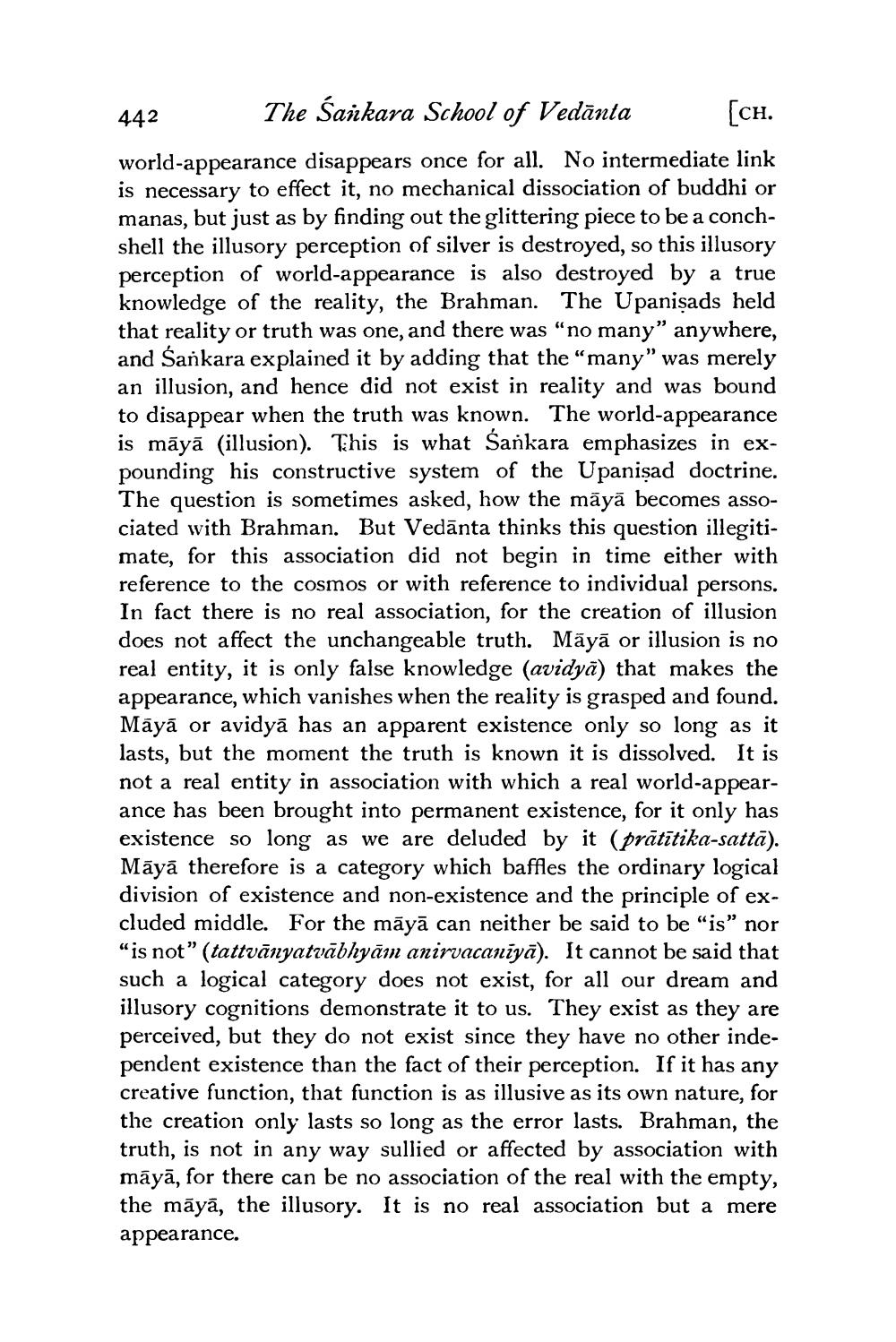________________
442 The Sankara School of Vedānta [CH. world-appearance disappears once for all. No intermediate link is necessary to effect it, no mechanical dissociation of buddhi or manas, but just as by finding out the glittering piece to be a conchshell the illusory perception of silver is destroyed, so this illusory perception of world-appearance is also destroyed by a true knowledge of the reality, the Brahman. The Upanisads held that reality or truth was one, and there was “no many" anywhere, and Sankara explained it by adding that the “many" was merely an illusion, and hence did not exist in reality and was bound to disappear when the truth was known. The world-appearance is māyā (illusion). This is what Sankara emphasizes in expounding his constructive system of the Upanisad doctrine. The question is sometimes asked, how the māyā becomes associated with Brahman. But Vedānta thinks this question illegitimate, for this association did not begin in time either with reference to the cosmos or with reference to individual persons. In fact there is no real association, for the creation of illusion does not affect the unchangeable truth. Māyā or illusion is no real entity, it is only false knowledge (avidyā) that makes the appearance, which vanishes when the reality is grasped and found. Māyā or avidyā has an apparent existence only so long as it lasts, but the moment the truth is known it is dissolved. It is not a real entity in association with which a real world-appearance has been brought into permanent existence, for it only has existence so long as we are deluded by it (prātītika-sattā). Māyā therefore is a category which baffles the ordinary logical division of existence and non-existence and the principle of excluded middle. For the māyā can neither be said to be “is” nor “is not" (tattvānyatvābhyām anirvacanīyā). It cannot be said that such a logical category does not exist, for all our dream and illusory cognitions demonstrate it to us. They exist as they are perceived, but they do not exist since they have no other independent existence than the fact of their perception. If it has any creative function, that function is as illusive as its own nature, for the creation only lasts so long as the error lasts. Brahman, the truth, is not in any way sullied or affected by association with māyā, for there can be no association of the real with the empty, the māyā, the illusory. It is no real association but a mere appearance.




